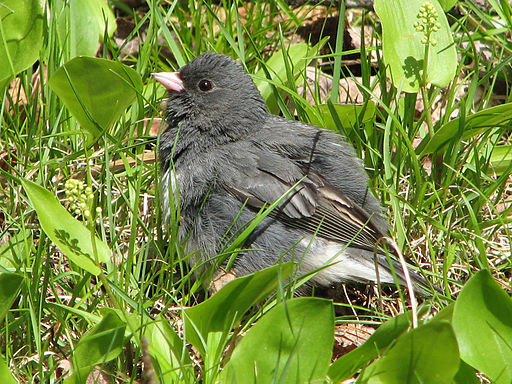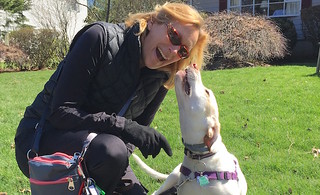Signs of spring ...and winter, snowbirds still hanging around in the Northeast
As I write this a landscaper outside at my neighbors house is rattling my brain with a leaf blower that heralds the return of spring and the clean up that comes from a long winter. Of course there are many other signs of spring going on other than landscapers but, there are also still some signs of winter.
I had decided to do a feeder watch this year and I really wanted to get one more count in before the April 4th deadline when the counting officially ends. I wasn’t really expecting to find anything out of the ordinary with this one, just counting what came to my feeder.
I like the count, what it teaches is that you really need to pay attention to the specifics of the bird, which helps when trying to identify between a Hairy Woodpecker or a Downy Woodpecker which can be tricky! On this particular day I was surprised to see a Junco still hanging around, even in early April. When I sat down to do some research on their migratory patterns I didn’t imagine just how remarkable a bird it is.
In the Northeast we only see Juncos in the winter, hence their nickname as the “Snowbird”. In the spring these birds migrate to the north, some as far north as the arctic and then they are out of there before the real cold and snow settles in. So, in the fall or early winter when they arrive here at New England feeders, winter for us is officially underway.
 |
| The Dark Eyed Junco I am used to seeing every winter doesn't necessarily look like the one above in other parts of the country. This one is all puffed up to keep himself warm on a very cold day. |
These fat bodied jumpers are medium sized sparrows and prefer the ground to a perch. They even build their nests on the ground and while at the feeder will very rarely be seen anywhere other than below it picking through the droppings of the more pickier birds.
What’s so cool about them is that the Junco genus is a near perfect study subject of evolution. Juncos seem to be able to adapt pretty quickly to an environment and create an entirely different population of species. Take for example a flock of Juncos that decided to make the University of California San Diego their summer home. The California Juncos migrated each season from their mountain homes to winter in the milder climate near the coast but have, within the last 30 years, colonized the campus rather than fly back to their mountain habitat.
The California Juncos for some reason just stayed in San Diego and they have stayed since at least the 1980’s forming a completely separate colony of Juncos that can be evolutionarily charted as different. Their wingspan is shorter and their bodies are smaller; the male’s song is higher to compensate for the low frequency traffic noise in order to attract a mate, they are less ornamental and less aggressive. Some studies show they are better parents too.
There is a good chance that this days Junco at the feeder is a male because females tend to migrate further south like to Alabama to avoid competition. The females also start their trip back earlier than the males. And, it is beneficial for the male to remain more northern since his trip north will be shorter and means that he will be arriving first to his breeding territory.
Whether the bird was male or female, already in migration and stopping for a treat or getting ready to go, I haven’t seen it again so winter is officially over, fingers crossed!



1 comments
Juncos are such welcome birds in the winter when so many birds have gone south. I was well acquainted with them in the Midwest but haven't had time to observe them since I arrived in Vancouver. Nice that you are doing the count -- barbara
ReplyDelete